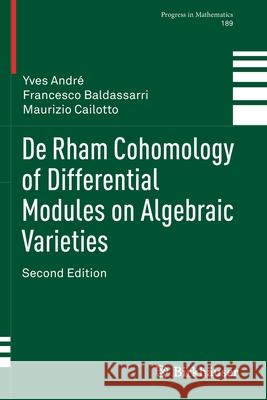de Rham Cohomology of Differential Modules on Algebraic Varieties » książka
topmenu
de Rham Cohomology of Differential Modules on Algebraic Varieties
ISBN-13: 9783030397210 / Angielski / Miękka / 2021 / 241 str.
de Rham Cohomology of Differential Modules on Algebraic Varieties
ISBN-13: 9783030397210 / Angielski / Miękka / 2021 / 241 str.
cena 484,18
(netto: 461,12 VAT: 5%)
Najniższa cena z 30 dni: 462,63
(netto: 461,12 VAT: 5%)
Najniższa cena z 30 dni: 462,63
Termin realizacji zamówienia:
ok. 22 dni roboczych
Dostawa w 2026 r.
ok. 22 dni roboczych
Dostawa w 2026 r.
Darmowa dostawa!
Kategorie:
Kategorie BISAC:
Wydawca:
Birkhauser
Seria wydawnicza:
Język:
Angielski
ISBN-13:
9783030397210
Rok wydania:
2021
Wydanie:
2020
Numer serii:
000019240
Ilość stron:
241
Waga:
0.36 kg
Wymiary:
23.39 x 15.6 x 1.37
Oprawa:
Miękka
Wolumenów:
01
Dodatkowe informacje:
Wydanie ilustrowane











